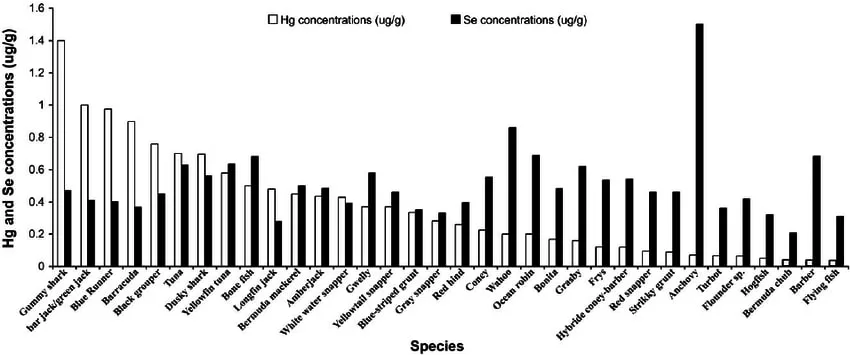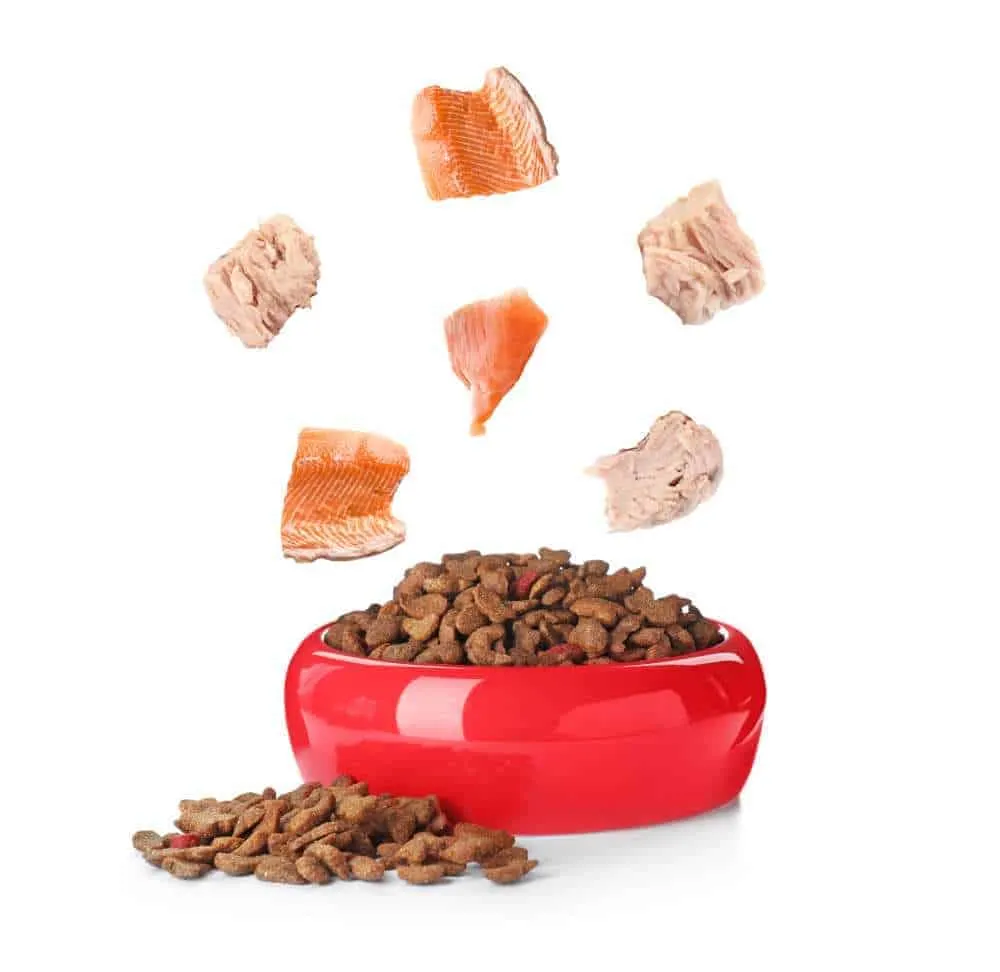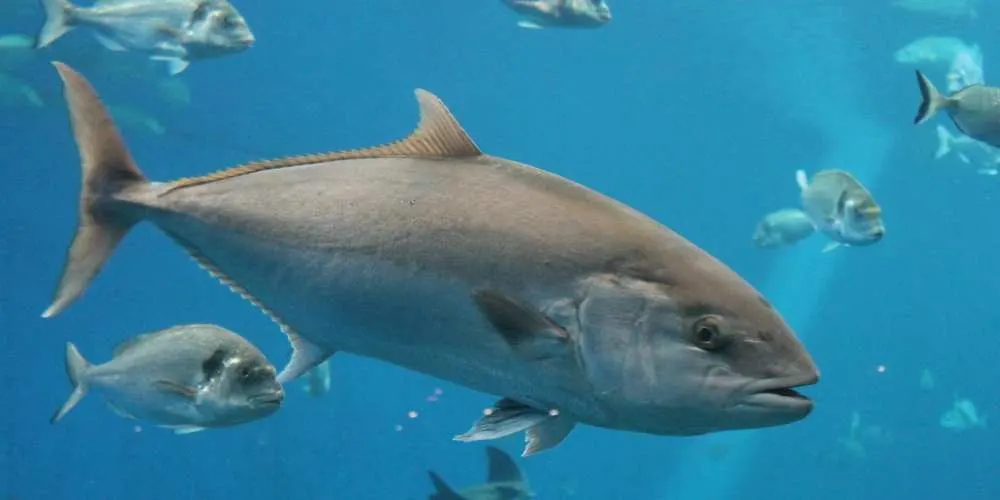When it comes to humans, all nutritionists agree on one thing – fish is healthy, packed with beneficial omega-3 fatty acids, and should thus be eaten at least twice a week! What about our furry friends? Should we let our pets enjoy fish together with us?
Fish is generally okay for dogs. Many commercial dog foods contain fish as well. It is high in protein, and your dog can benefit from it just like you do.

Can Dogs Eat Tuna Fish?
Be careful, though; not all fish are safe for dogs. For example, if you would like to treat your four-legged friend with a can of tuna and you are wondering can dogs eat tuna fish, sadly, the answer is NO!
Unlike their feline friends or nemesis, dogs should avoid saltwater fish. If your dog does get his or her paws on a bowl of tuna and devours it before you have time to take it away, you should not panic! Tuna is not toxic to dogs when eaten occasionally and in small amounts!
On the other hand, if your dog eats tuna often and in large quantities, you can expect a number of health problems.
Therefore, if you want to be prepared for every scenario and always keep your pup safe, stay tuned, and find out why tuna is not for canines!

Why Should Dogs Avoid Tuna Fish?
Unlike most other types of fish, tuna contains high levels of mercury. This is why tuna is on a NO-NO list when it comes to feeding our pets while other types of fish, such as salmon, tilapia, whitefish, flounder, herring, and Arctic char, are all okay. Moreover, these freshwater fish are often used in commercial dog food too.
Why Is Mercury Dangerous?
If your dog consumes too much mercury, he or she can end up with mercury poisoning. Sometimes, if you react quickly and appropriately, your dog can get better, but there can also be some severe, or even fatal, health complications.
How Did Mercury End Up In Tuna In The First Place?
It is our fault! Industrial activities such as coal-fired electricity generation have led to increased mercury levels in our rivers, lakes, and oceans. Fish cannot do anything about it – the mercury inevitably accumulates in their tissue.
The longer the fish lives, the higher will the concentration of mercury in its flesh be. As a rule, large fish live longer than small ones. Tuna is large and long-living, too – that is why it will typically have quite high mercury levels.
For this reason, the consumption of tuna is limited for us people too. The limits are based on our weight.
Dogs are much smaller than humans, and no one has calculated how much tuna they can eat safely. For that reason, it is better to avoid it altogether.
If you want your dog to benefit from eating fish, you can turn to other types that contain lower mercury levels.
The concentrations of mercury and selen in ocean fish can best be observed in the following table:

What If Your Dog Has Eaten Some Tuna While You Were Not Looking?
We have already told you, if it is a one-time thing only, your dog should be perfectly fine even if he or she eats an entire can of tuna. A small amount of tuna fish will not cause mercury poisoning.
Avoid such accidents by all means, though. It should not be hard to prevent your dog from eating tuna – after all, there is no chance your pup will open a can on its own!
Things can be quite tricky if you own both a dog and a cat. Namely, feline food often contains tuna even though cats, too, are susceptible to mercury poisoning. Why is that? We don’t know.
Still, it is better to be on the safe side and buy your cat food made from other types of fish rather than that with tuna. We know that most cats love tuna, but they cannot decide what is good for them in the long run.
Just in case, make sure you teach your dog to eat only the food from his or her bowl.
How Can You Recognize Mercury Poisoning In Your Dog?
If you have only now discovered the dangers of tuna fish, and you have fed your dog tuna in the past, you should be on the lookout for the following symptoms of mercury poisoning in dogs:
- Loss of hair
- Loss of feeling in paws
- Loss of coordination
- Vomiting
- Vomiting blood
- Watery diarrhea
- Bloody diarrhea
- Anxiety
- Nervousness
- Blindness
- Inability to urinate
- Abdominal swelling
- Tremors
If you notice any of the above-mentioned symptoms and know that your dog has eaten tuna or other food containing mercury, contact your vet immediately and let him know all the facts. In this way, you can save your beloved pooch from dire consequences.

Controversy: Why Do Some People Recommend Feeding Tuna To Dogs?
You will probably find some texts on the internet that claim quite the opposite of all of what you have read here so far. Namely, some people support the idea that the occasional tuna treat is beneficial for dogs and recommend it.
They support their claim with facts that are actually true, and we agree with:
- Tuna Has Some Potent Nutritional Benefits
Tuna is good for us humans due to its high protein and omega-3 fatty acids content. The same goes for dogs and every other animal.
These omega-3 acids are important to maintain healthy blood pressure, and thus heart function too. So if you want to preserve your dog’s overall cardiovascular health, you should occasionally feed him or her tuna fish.
Besides, tuna has high levels of B vitamins and vitamin D. It is rich in beneficial minerals such as potassium, iodine, magnesium, selenium, choline, and phosphorus as well.
- Tuna Contains A Unique Type Of Selenium Called Selenoneine
What is so special about selenoneine? Well, according to some early research, it has an important superpower – it protects our cells from damage caused by mercury. In translation, if this is true, selenoneine can bind to mercury before it can do any harm!
In theory, things are sounding promising, but we will wait for more research and real-life testing before we believe it. Scientists are still not quite sure how selenoneine acts once tuna is consumed, so only time will tell!
While we wait for selenoneine research to end, we should also remember one more thing – the risk is real. There were many cases of mercury poisoning in the past, and we must not overlook that fact.
After all, why risk the health or even the life of our important family member when we can avoid it so easily. Other types of fish, such as flounder, herring, and salmon provide your dog with almost the same nutritional benefits minus the mercury-poisoning risk.
How Can You Keep The Risk Low If You Do Decide To Offer Your Dog The Occasional Tuna Treat?
If you choose to feed your dog some tuna fish from time to time, you can at least try to keep the risk of mercury poisoning as low as possible. We will help you do that.
Here are some tips you should remember:
- The smaller the fish, the younger it is and the less mercury it contains – you should keep that in mind when purchasing fresh tuna.
- Canned tuna is usually made from large tuna fish and thus contains high mercury levels as well as a lot of salt.
- Skipjack and Albacore tunas are the best choices since they have the lowest mercury content of all the tuna fish types.
- Cooking tuna in water with no salt or oil added to it is the best option for preparing tuna for your dog.
- Consider your dog’s weight when deciding the amount of tuna you will serve can help minimize the risk.
What Type Of Tuna Can Dogs Eat?
There are over 20 different types of tuna, but only 5 are edible and safe for consumption, and these are:
- Skipjack
- Yellowfin
- Bluefin
- Bigeye
- Albacore
Opt for albacore or skipjack tuna, because these two contain the lowest mercury level as those are the smallest ones of all 20 types.
Can Dogs Eat Raw Or Canned Tuna?
Technically yes, but we strongly advise not to. The American Veterinary Medical Association does not recommend the consumption of undercooked or raw fish. This is because fresh tuna can contain parasites, bacteria, and viruses embedded in the muscle tissues, internal organs, and skin.
These bacterial organisms are known as Salmonella, Clostridium, and Listeria, and could be extremely dangerous for animals and humans; thus, could endanger public health.
Another reason you shouldn’t consider raw tuna (or any other raw fish) is because it contains the enzyme Thiaminase. This enzyme will break down any thiamine (B1) your dog ingests, but proper cooking breaks down the enzyme.
However, if you still decide to feed your dog raw tuna, you should wash it thoroughly and debone it first. Also, consider freezing the meat for a few weeks, as chilly temperatures are not suitable for these parasites.
Canned tuna, when given in moderation can be a very healthy, protein-packed snack for your dog. Choose skipjack and albacore because those have lower mercury and sodium levels. Also, look for the tuna packed in water rather than oil, and before you decide to treat your dog with tuna water, first make sure there is no salt or other seasonings added.
Can Dogs Be Allergic To Tuna?
Yes, they can. In fact, dogs can develop intolerance to any type of food, so there is always a slight possibility your dog is allergic to fish, such as tuna. That’s why you always start with small amounts when giving any new food.
Some of the symptoms of food allergies are:
- Chest tightness
- Skin rash or hives
- Watery, itchy, or red eyes
- Coughing, wheezing, shortness of breath
- Facial pain
- Runny or stuffy nose
- Itchy or infected ears
- Swelling of the face, ears, earflaps, eyelids, lips
- Red, inflamed skin
- Diarrhea
- Vomiting
If you notice any of the symptoms above, contact your vet as soon as possible, and don’t feed your dog with tuna again.

How Much Tuna Can Your Dog Eat?
There are certain risks such as mercury and sodium poisoning, so it is highly advised to limit the intake. To clear things up, let us look at the chart below:
| 20-pound dog: | 1 canned tuna | Once every three weeks (yellowfin) or Once every ten weeks (white albacore) |
| 40-pounds dog: | 1 canned tuna | Once every 9 days (yellowfin) or Once every 4 weeks (white albacore) |
| 90-pounds dog: | 1 canned tuna | Once every 5 days (yellowfin) or Once every 2 weeks (white albacore) |
| 150-pound dog: | 1 canned tuna | Once every 3 days (yellowfin) or Once every 9 days (white albacore) |
It is for the best you give your dog tuna as a special treat that you will provide every once in a while.
How To Prepare Tuna For Your Dog?
If your dog is eating tuna for the first time, it is probably best to start slowly, to make sure there are no worrisome reactions. You can buy different types of tuna in various forms, and each has its attributes.
It is best to serve your dog plain tuna, without any salt or additional seasonings such as onions, garlic, and similar as these could be dangerous for your dog’s health. To get rid of as much salt as possible, try to steep the tuna in water overnight.
Also, if you plan to give your dog canned tuna, use the one that is packed in water rather than oil or other add-ons, as too much fat and salt can cause inflammation of the pancreas and other health risks.
If you choose to serve your dog cooked tuna, it is best to buy tuna steaks. Both baking and broiling are fine (even grilling and steaming), as long as you don’t add extra oil or seasonings.
Still, raw or cooked, you should always remove the fish’s bones, as bones can cause your dog to choke and damage the internal organs. Furthermore, always cut tuna in bite-size pieces before serving it, for easier chewing.
Serving raw tuna is also an option, just make sure that the meat is deboned, cut into bite-size pieces, and thoroughly washed.
Tuna Alternatives
1. Whiting
This sea fish is a good source of selenium, magnesium, protein, and vitamin B. Make sure you pull out all the bones, even the smallest ones, as those could be a choking hazard.
2. Salmon
This fish provides almost the same benefits as tuna. Just make sure you cook it before feeding it to your dog and serve it in small portions in moderation.
3. Sardines
These fish have a short lifetime and are very small; thus, the chances of mercury accumulations over time are reduced to a minimum. Sardines are packed with proteins and minerals and are also a great source of calcium.

The Bottom Line
Fish can be good for your dog, but tuna is not a good choice. You can easily find an alternative solution – there is plenty of fish in the sea.
Even though some people claim that feeding your dog the occasional tuna treat is okay; we do not agree. You should not risk your dog’s health when you can simply give him or her another type of fish with similar nutritional value as tuna.
Keep your dog safe! He or she is a family member you cannot replace!
Learn More: What Can Dogs Eat? A Comprehensive List Of Dog-safe Foods

